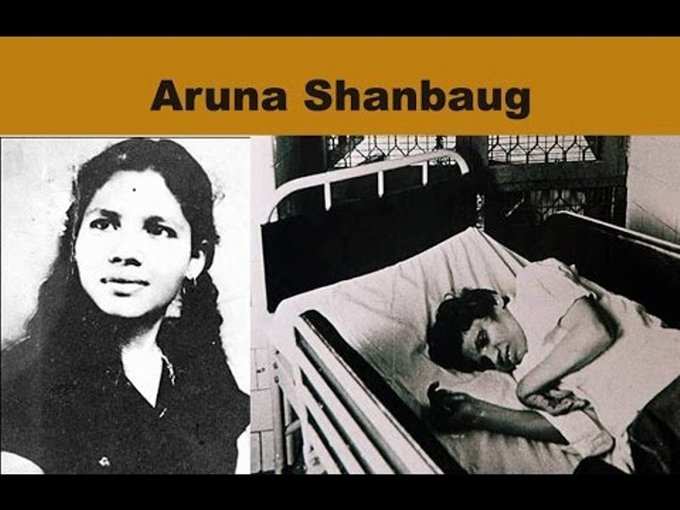
Aruna Shanbaug’s death on the morning of May 18 has triggered media overkill. Her deeply heartbreaking tragedy focused attention on her right to live or die. But it also touched on a number of related social, ethical, legal, medical, sexual and religious issues.
They all led to one overwhelming question: when we failed to support her right to live with dignity, did we have the right to force her to live at all? Going by a movie like ‘Guzaarish’, it is easy to see that the question fascinates people, but it doesn’t clarify the issue.
Ironically, India continues to debate and ponder its wordy duels on the one issue of a woman in a Permanently Vegetative State (PVS). She was suffering because of a nation that believed it owned her
Ultimately, in March 2011, she gave something to a society that had robbed her of everything, including her right to die. She was the cause for which an activist fought to legalise
Shanbaug has thus become an icon of the new debate on euthanasia, which, by the way, is a Greek word, meaning “good death” that is preferable to life. Her case has triggered a plea for active, rather than passive euthanasia, raising some fundamental questions: How ethical is it to actively support someone’s death? Isn’t it selfish to hesitate to help a suffering person die? Should we be worried only about our own morals, ethics and souls, rather than relieve pain in others?
Perhaps some opponents had hoped that there could be the remote possibility of an invented cure for the disease. However, that cannot be immediate, anyway. So what is the point of waiting for years to revive Aruna Shanbaug in her old age?
To recap her background briefly---Shanbaug came to Mumbai from Haldipur, Karnataka, and became a nurse at King Edward Memorial Hospital. Brutally raped by an attendant on November 27, 1973 and choked with a dog chain, Aruna found that her oxygen supply to her brain was cut off, which caused extensive damage and left her in a vegetative state, after which she was taken care of completely by the hospital staff.
Till 2011, euthanasia was not legal, so she did not get relief through mercy killing. On March 2011, author Pinki Virani, calling herself Aruna’s “next friend”, filed a petition for permission to let her die, and helped legalise passive euthanasia in a historic judgement on March 2011. The courts stood by the hospital's management and nursing staff, which did not want to administer mercy killing. Claiming that it has been taking care of her for 36 years, keeping her not only alive, but as free of pain and bedsores as possible, KEM Hospital took the final decision to prolong her ‘living death’, even though opponents said that she was more “like a dead animal”. Hence, while passive euthanasia was legalized, it was rejected in her case. Finally, she died on May 18 after four years.
Today, euthanasia is legal only in the Netherlands, Belgium, Colombia, India and Luxembourg. Assisted suicide or active euthanasia is legal only in Switzerland, Germany, Japan, Albania and five US states.
The advocates of active euthanasia are firm that it would help a terminally ill patient to suffer the least, due to the quick and instant medical delivery of death, with an injection or drug that can put her out of misery in a matter of minutes. What is the point of prolonging pain before he or she succumbs to death without “assistance”, ask the advocates. Moreover, as in the case of the Venkatesh plea in 2004, it would help him to donate organs to help other patients.
On the other hand, active euthanasia is opposed due to a number of reasons beginning with religion. It is easy for the holier-than-thou supporters of ‘life’ to feel priggishly righteous about their stand, but then some kind of voluntary openness to death is also common among most religions. Hinduism had Bheeshma open to ‘Ichcha mrityu’, or
The nub of the opposition is the strange and sudden love for the ‘life’ of someone who has been suffering for years. In a country like India, in which life is of little value for many---which is why hundreds get killed or are put on the burner---the sudden defence of the life of an “almost dead” woman seems to be all because most of the supporters or opponents had nothing else to contribute, except waffle about it! Is someone’s life more precious than the joy of living? Does the moral in the issue matter more than the compassion for the suffering?
Active euthanasia would help to end the patient’s pain, but passive euthanasia would only prolong it; contributing nothing except a feeling of smug self-congratulation for the perpetrator.
The legal angle is also interesting. Many opponents of euthanasia believe that if a patient’s death is financially advantageous to the next-of-kin, there would be nobody in his nearest circle who would mourn his death, and might even promote it actively. Thus, if active euthanasia were legal, the vultures would be active too.
While such instances cannot be ruled out, it would be heartless to prevent active euthanasia only to prevent its misuse, while a number of measures can be taken to see that it follows all the rules.
Watching a terminally ill patient dying slowly after withdrawing life support instead of administering death could thus be putting the patient in a more painful, prolonged situation of deprivation and dehydration.
It is better, then, to think rationally and decide about life, and death, instead of going by emotional indicators. If most arguers are reluctant to play God, then would they be fair in shirking responsibility and playing the devil?
(Image credits: economictimes.com)